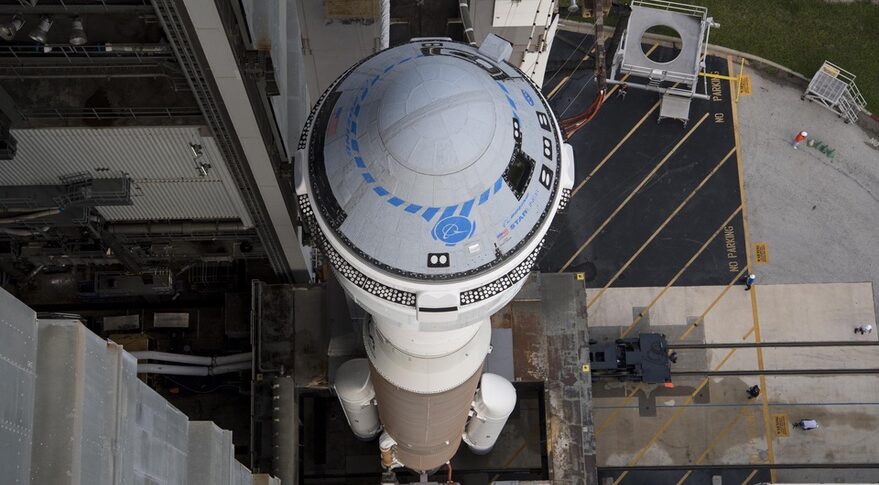Starliner investigation continuesby Jeff Foust — August 8, 2021 [SN]
 A combination of schedule conflicts on both the ISS and with the Atlas 5 could push back the CST-100 Starliner's test flight by months if it does not launch in August. Credit: NASA/Aubrey Gemignani
A combination of schedule conflicts on both the ISS and with the Atlas 5 could push back the CST-100 Starliner's test flight by months if it does not launch in August. Credit: NASA/Aubrey GemignaniWASHINGTON — Boeing is continuing its investigation into the thruster issue that delayed the launch of its CST-100 Starliner commercial crew vehicle but could soon run into schedule conflicts on both the International Space Station and with its launch vehicle. (...)
What caused the valves to malfunction isn’t clear, although Boeing said in an earlier statement that they had ruled out software problems. One possibility is damage such as water intrusion during a severe thunderstorm shortly after the rocket was rolled out to the pad Aug. 2.
Neither NASA nor Boeing have set a new launch date for the OFT-2 mission. Boeing said in its statement that it is “assessing multiple launch opportunities for Starliner in August” and will work with NASA and United Launch Alliance to determine an appropriate launch date.
Source:
https://spacenews.com/starliner-investigation-continues/